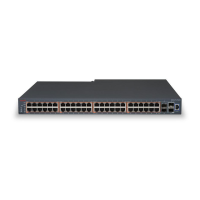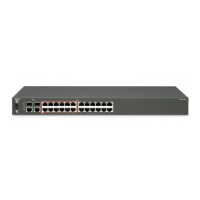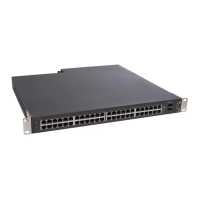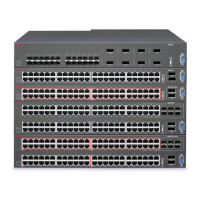Avaya C360 Layer 3 Features
186 Installation and Configuration Guide Avaya C360 Multilayer Stackable Switches, version 4.5
VRRP (Virtual Router Redundancy Protocol) Configuration
VRRP Overview
VRRP is an IETF protocol designed to support redundancy of routers on the LAN, as well as
load balancing of traffic. VRRP is transparent to host stations, making it an ideal choice when
redundancy, load balancing and ease of configuration are all required.
The concept underlying VRRP is that a router can backup other routers, in addition to
performing its primary routing functions. This redundancy is achieved by introducing a virtual
router. A virtual router is a routing entity associated with multiple physical routers. The routing
functions of the virtual router are performed by one of the physical routers with which it is
associated. This router is known as the master router. For each virtual router, VRRP selects a
master router. If the selected master router fails, another router is selected as master router.
In VRRP, two or more physical routers can be associated with a virtual router, thus achieving
extreme reliability. In a VRRP environment, host stations interact with the virtual router. They
are not aware that this router is a virtual router, and they are not affected when a new router
takes over the role of master router. This makes VRRP fully interoperable with every host
station.
VRRP can be activated on an interface using a single command while allowing for the
necessary fine-tuning of the many VRRP parameters. For a detailed description of VRRP, refer
to VRRP standards and published literature.

